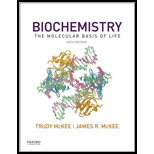
To review:
Definition of the following terminologies:
a) Prokaryote
b) Eukaryote
c) Organelle
d) Hydrophilic
e) Hydrophobic
Introduction:
Organisms are classified into prokaryotesand eukaryotes on the basis of theircell characteristics. Both types of cells contain cytoplasm, which provides a site for various
Explanation of Solution
a) Prokaryote: Unicellular living organisms thatlack a well-defined nucleus are termed as prokaryotes. They are classified into two distinct classes: archaea and bacteria. Some of the bacteria can cause disease, such as cholera, syphili, snd tetanus, whereas some are useful to humans, such as those which are involved in the preparation of yogurt, chees, end bread. Organisms in group Archaea can thrive in challenging habitats.
b) Eukaryote: These organisms can be unicellular (such as protist) ormulticellular (such as plants and animals). They possess a well-defined nucleus and membrane-bound organelles(subcellular compartments) in their large sized cells. Their cells are more complex due to cellular specialization (according to their specific functions) and communication mechanisms among the cells.
c) Organelles: These are thesubcellular compartmentspresent mainly in eukaryotes. They have the ability to perform specificcellular functions. They are often bounded by a membrane, and provide compartmentalization for efficient regulation of biochemical processes.
d) Hydrophilic: The molecules thatfavorably interact with water molecules or polar materials are termed as hydrophilic. They possess charge (positive or negative), or contain electronegative elements, such as nitrogen or oxygen to form a hydrogen bond with water. Examples of such molecules in a cell include sugar (glucose) and salt (sodium chloride).
e) Hydrophobic: Hydrophobic molecules are those which do not interact with water as they lack any electronegative elements. They tend to form aggregation spontaneously when mixed with waterin an aqueous environment. Aggregation results in minimum contact between their nonpolar hydrocarbon chains and water, thus preventing any interaction.
Therefore, it can be concluded that prokaryotes and eukaryotes are different from each other on the basis of nucleus, size, and presence of membrane-bound organelles. Substances in a cell can be hydrophobic or hydrophilic, depending upon whether they interact with water or not.
Want to see more full solutions like this?
Chapter 2 Solutions
Biochemistry: The Molecular Basis of Life
- Biochemistry Question Please help. Thank you What is the function of glutamate dehydrogenase?arrow_forwardBiochemistry Question Please help. Thank you How and why does a high protein diet affect the enzymes of the urea cycle?arrow_forwardBiochemistry What is the importance of the glucose-alanine cycle?arrow_forward
- Biochemistry Assuming 2.5 molecules of ATP per oxidation of NADH/(H+) and 1.5molecules of ATP per oxidation of FADH2, how many ATP are produced per molecule of pyruvate? Please help. Thank youarrow_forward1. How would you explain the term ‘good food’? 2. How would you define Nutrition? 3. Nutrients are generally categorised into two forms. Discuss.arrow_forwardBiochemistry Question. Please help solve. Thank you! Based upon knowledge of oxidation of bioorganic compounds and howmuch energy is released during their oxidation, rank the following, from most to least, with respect to how much energy would be produced from each during their oxidation. Explain your placement for each one.arrow_forward
- Biochemistry Question.For the metabolism of amino acids what is the first step for theirbreakdown? Why is it necessary for this breakdown product to be transported to the liver? For the catabolism of the carbon backbone of these amino acids, there are 7 entry points into the “standard” metabolic pathways. List these 7 entry points and which amino acids are metabolized to these entry points. Please help. Thank you!arrow_forwardBiochemistry Question. Please help. Thank you. You are studying pyruvate utilization in mammals for ATP production under aerobic conditions and have synthesized pyruvate with Carbon #1 labelled with radioactive C14. After only one complete cycle of the TCA cycle, which of the TCA cycle intermediates would be labeled with C14? Explain your answer. Interestingly, you find C14 being excreted in the urine. How does it get there?arrow_forwardBiochemistry question. Please help with. Thanks in advance For each of the enzymes listed below, explain what the enzyme does including function, names (or structures) of the substrate and products and the pathway(s) (if applicable) it is/are found in. (a) ATP synthetase (b) succinate dehydrogenase (c) isocitrate lyase (d) acetyl CoA carboxylase (e) isocitrate dehydrogenase (f) malate dehydrogenasearrow_forward
- Draw and name each alcohol and classify it as primary, secondary, or tertiary. Explain your answer thoroughly.arrow_forwardDraw the product of each reaction. If there are multiple products, draw only the major product. Explain your answer thoroughly.arrow_forwardIdentify the type of bond in the following disaccharides. Number your carbons to show work. Explain your answer thoroughly. Draw the number of carbons also.arrow_forward
 BiochemistryBiochemistryISBN:9781319114671Author:Lubert Stryer, Jeremy M. Berg, John L. Tymoczko, Gregory J. Gatto Jr.Publisher:W. H. Freeman
BiochemistryBiochemistryISBN:9781319114671Author:Lubert Stryer, Jeremy M. Berg, John L. Tymoczko, Gregory J. Gatto Jr.Publisher:W. H. Freeman Lehninger Principles of BiochemistryBiochemistryISBN:9781464126116Author:David L. Nelson, Michael M. CoxPublisher:W. H. Freeman
Lehninger Principles of BiochemistryBiochemistryISBN:9781464126116Author:David L. Nelson, Michael M. CoxPublisher:W. H. Freeman Fundamentals of Biochemistry: Life at the Molecul...BiochemistryISBN:9781118918401Author:Donald Voet, Judith G. Voet, Charlotte W. PrattPublisher:WILEY
Fundamentals of Biochemistry: Life at the Molecul...BiochemistryISBN:9781118918401Author:Donald Voet, Judith G. Voet, Charlotte W. PrattPublisher:WILEY BiochemistryBiochemistryISBN:9781305961135Author:Mary K. Campbell, Shawn O. Farrell, Owen M. McDougalPublisher:Cengage Learning
BiochemistryBiochemistryISBN:9781305961135Author:Mary K. Campbell, Shawn O. Farrell, Owen M. McDougalPublisher:Cengage Learning BiochemistryBiochemistryISBN:9781305577206Author:Reginald H. Garrett, Charles M. GrishamPublisher:Cengage Learning
BiochemistryBiochemistryISBN:9781305577206Author:Reginald H. Garrett, Charles M. GrishamPublisher:Cengage Learning Fundamentals of General, Organic, and Biological ...BiochemistryISBN:9780134015187Author:John E. McMurry, David S. Ballantine, Carl A. Hoeger, Virginia E. PetersonPublisher:PEARSON
Fundamentals of General, Organic, and Biological ...BiochemistryISBN:9780134015187Author:John E. McMurry, David S. Ballantine, Carl A. Hoeger, Virginia E. PetersonPublisher:PEARSON





